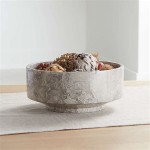Selling Home Decor From Home: A Comprehensive Guide
The home decor market is perpetually dynamic, driven by evolving trends, seasonal shifts, and individual preferences. This constant flux presents significant opportunities for entrepreneurs and creative individuals seeking to establish businesses selling home decor items from the comfort of their own homes. Several factors contribute to the viability of this business model, including low overhead costs, the accessibility of online platforms, and the potential to reach a broad customer base. This article provides a detailed guide to navigating the process of selling home decor from home, covering key aspects such as product sourcing, marketing strategies, and operational considerations.
Identifying a Niche and Defining Your Brand
Before embarking on any business venture, it is crucial to identify a specific niche within the home decor market. The sheer breadth of the industry – encompassing furniture, lighting, textiles, wall art, and decorative accessories – necessitates a focused approach. Selecting a niche allows for the development of specialized expertise, targeted marketing campaigns, and a distinctive brand identity. Niches can be defined by factors such as style (e.g., minimalist, bohemian, rustic), material (e.g., sustainable wood, recycled glass, handmade pottery), price point (e.g., budget-friendly, luxury), or target audience (e.g., young professionals, families with children, pet owners).
Once a niche is identified, the next step is to define the brand. This involves establishing a clear brand message, visual identity, and value proposition. The brand message should articulate the unique selling points of the products and the overall ethos of the business. For instance, a brand specializing in eco-friendly home decor could emphasize its commitment to sustainability and ethical sourcing practices. The visual identity encompasses the brand's logo, color palette, typography, and overall aesthetic. This should be consistent across all marketing materials and online platforms. The value proposition outlines the benefits that customers will receive from purchasing the products. This could include superior quality, unique design, exceptional customer service, or a commitment to social responsibility.
Market research is essential for validating the chosen niche and brand concept. This involves analyzing market trends, identifying competitors, and understanding customer preferences. Online tools such as Google Trends, social media analytics, and competitor analysis software can provide valuable insights. Conducting surveys and focus groups can also help to gather direct feedback from potential customers. Gathering enough information to ensure there is a need for your product and how the business will meet the audience's needs is a pivotal element in ensuring it will be feasible.
Sourcing Products and Establishing Inventory Management
Product sourcing is a critical aspect of selling home decor. Several options are available, each with its own advantages and disadvantages. These include:
- Wholesale: Purchasing products in bulk from wholesalers or distributors. This typically offers lower per-unit costs but requires a significant initial investment and storage space.
- Dropshipping: Partnering with a dropshipping supplier who handles inventory management and order fulfillment. This eliminates the need to store inventory but can result in lower profit margins and less control over product quality and shipping.
- Handmade: Creating the products oneself. This allows for complete control over design and quality but can be time-consuming and limit scalability.
- Consignment: Selling products on behalf of other artists or craftspeople. This reduces the risk of holding unsold inventory but requires establishing clear agreements and commission structures.
- Upcycling/Repurposing: Transforming existing materials or products into new home decor items. This is a sustainable and creative option but requires specialized skills and access to materials.
The choice of sourcing method will depend on factors such as budget, skill set, and desired level of control. Regardless of the chosen method, it is essential to establish effective inventory management practices. This involves tracking inventory levels, forecasting demand, and implementing strategies to minimize stockouts and overstocking. Inventory management software can automate these processes and provide valuable insights into sales trends.
Quality control is another critical aspect of product sourcing. It is essential to inspect products for defects or damage before they are shipped to customers. This can involve establishing quality control procedures with suppliers or conducting inspections oneself. Prompt and effective resolution of customer complaints regarding product quality is crucial for maintaining a positive reputation.
For hand-made or upcycled items, sourcing raw materials becomes a key consideration. The selection of materials should align with the brand's aesthetic and commitment to quality. Sustainable and ethically sourced materials are increasingly valued by consumers. Developing relationships with reliable suppliers is essential for ensuring consistent access to high-quality materials.
Marketing and Sales Strategies
Effective marketing and sales strategies are essential for driving traffic to the business and converting visitors into customers. Several channels can be utilized, including:
- E-commerce Platforms: Establishing an online store on platforms such as Shopify, Etsy, or WooCommerce. These platforms provide tools for building websites, processing payments, and managing orders.
- Social Media Marketing: Utilizing social media platforms such as Instagram, Pinterest, and Facebook to showcase products, engage with customers, and drive traffic to the online store. Creating high-quality visual content is essential for success on these platforms.
- Search Engine Optimization (SEO): Optimizing the website and product listings for search engines such as Google. This involves using relevant keywords, creating high-quality content, and building backlinks.
- Email Marketing: Building an email list and sending regular newsletters and promotional emails to subscribers. This is a cost-effective way to stay in touch with customers and promote new products or special offers.
- Content Marketing: Creating valuable and engaging content such as blog posts, articles, and videos related to home decor. This can help to attract new customers and establish the business as an authority in the industry.
- Paid Advertising: Utilizing paid advertising platforms such as Google Ads and social media advertising to reach a wider audience. This requires careful targeting and budget management.
- Influencer Marketing: Partnering with social media influencers to promote the products to their followers. This can be an effective way to reach a targeted audience and build brand awareness.
Customer service is crucial for building customer loyalty and generating repeat business. Responding promptly and professionally to customer inquiries, resolving complaints efficiently, and providing personalized recommendations can help to create a positive customer experience. Offering a hassle-free return policy is also essential for building trust.
Analyzing sales data is crucial for understanding customer behavior and optimizing marketing efforts. Tracking key metrics such as website traffic, conversion rates, and average order value can provide valuable insights into the effectiveness of different marketing channels. A/B testing different marketing messages and website layouts can help to identify what works best for the target audience.
Participating in online marketplaces can be a valuable way to reach a wider audience. Etsy, Amazon, and other marketplaces offer access to millions of potential customers. However, it is important to be aware of the fees and policies associated with these platforms. Optimizing product listings and providing excellent customer service are essential for success on online marketplaces.
Photography plays a vital role in marketing home decor products online. High-quality photos that accurately represent the products and showcase their features are essential for attracting customers. Using natural lighting, staging the products effectively, and providing multiple angles can help to create compelling visuals.
Building a strong online presence is crucial for long-term success. This involves creating a professional website, maintaining an active social media presence, and engaging with customers online. Regularly updating the website with new products and content can help to keep customers engaged and attract new visitors.

Top 12 Minimalist Home Decor Ideas For A Simplified Look Decorilla Interior Design

27 Colorful Home Design Decorating Ideas Extra Space Storage

60 Clever Home Decor Ideas That Designers Swear By

Trendy Bohemian Style Decor For Every Room Of Your Home Decorilla Interior Design

Affordable Home Furniture For Every Room At

Affordable Home Decor Ideas The

25 Tips For Decorating A Modern Home Extra Space Storage

13 Creative Home Decor Ideas To Transform Your Space

40 Home Decoration Ideas For Your Living Area

12 Home Decor Ideas To Refresh Your Without Renovating Forbes Vetted








